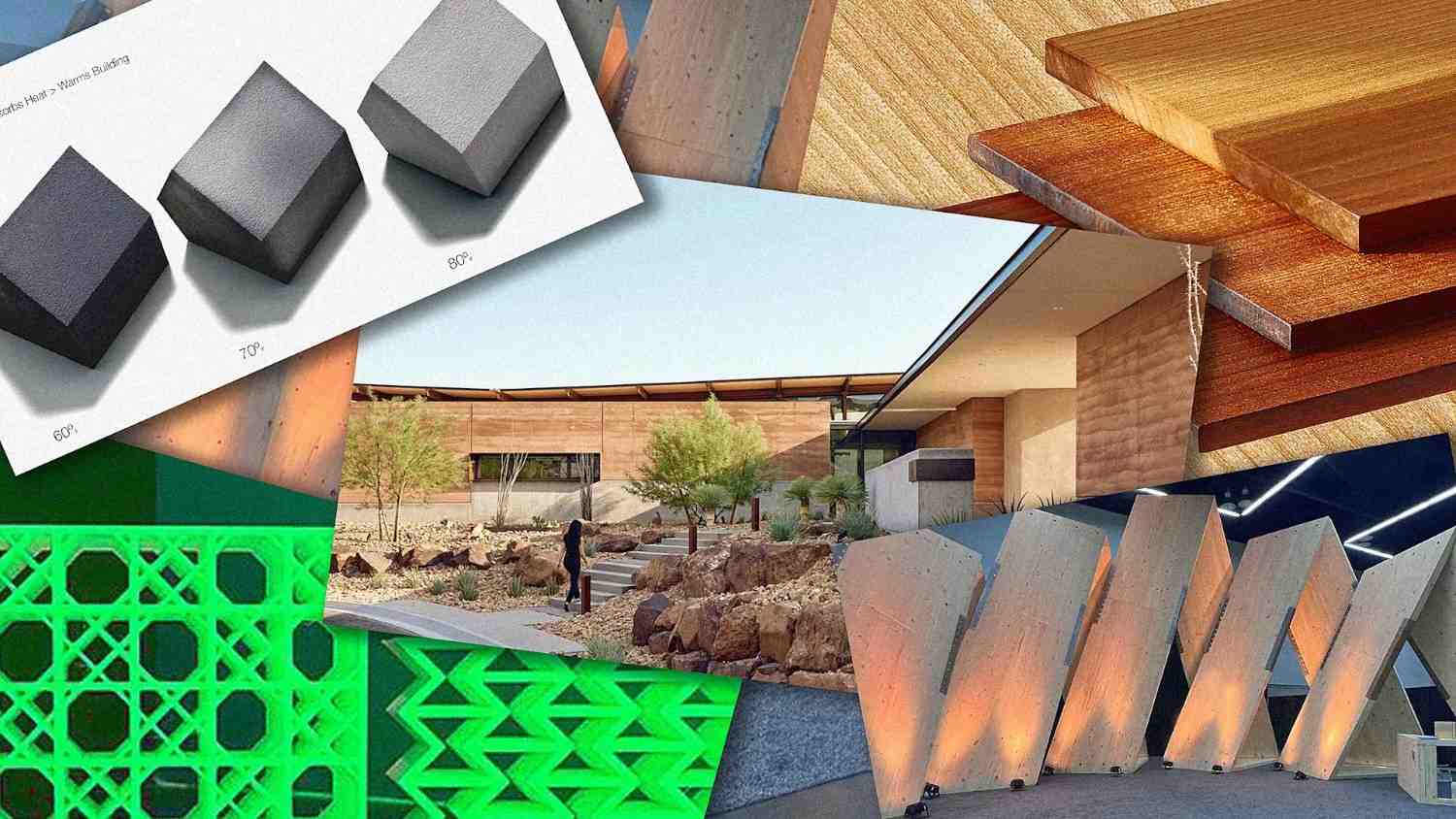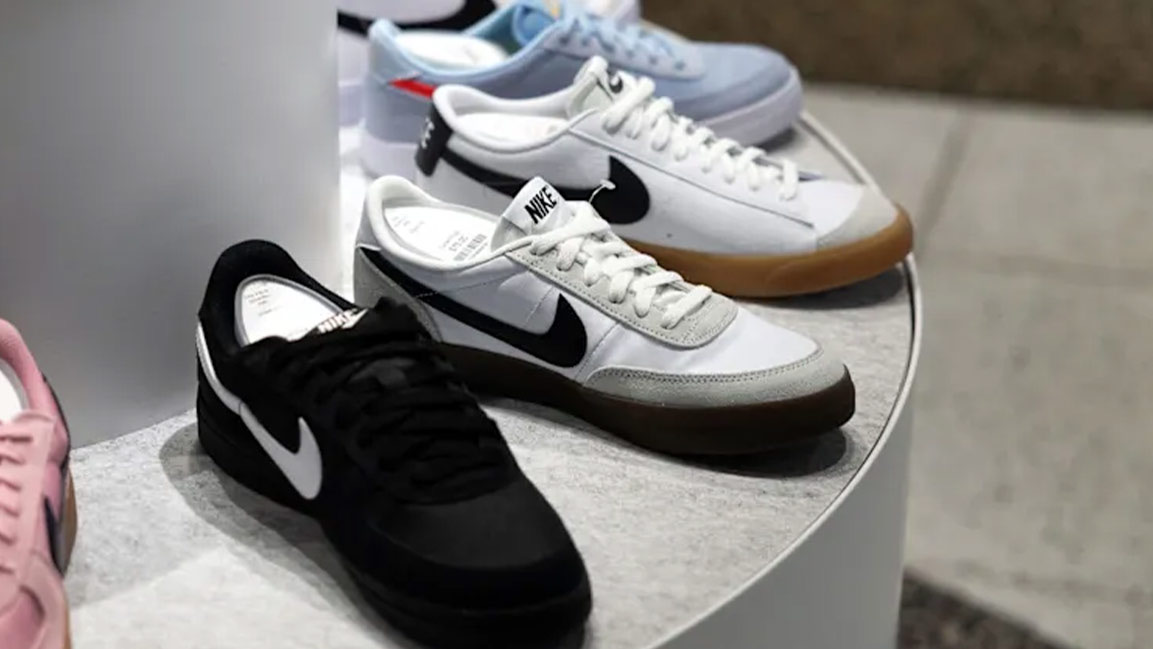- | 8:00 am
This new type of air purifier doesn’t need a filter
Airea uses a novel design to eliminate everything from viruses to smoke particles in the air.
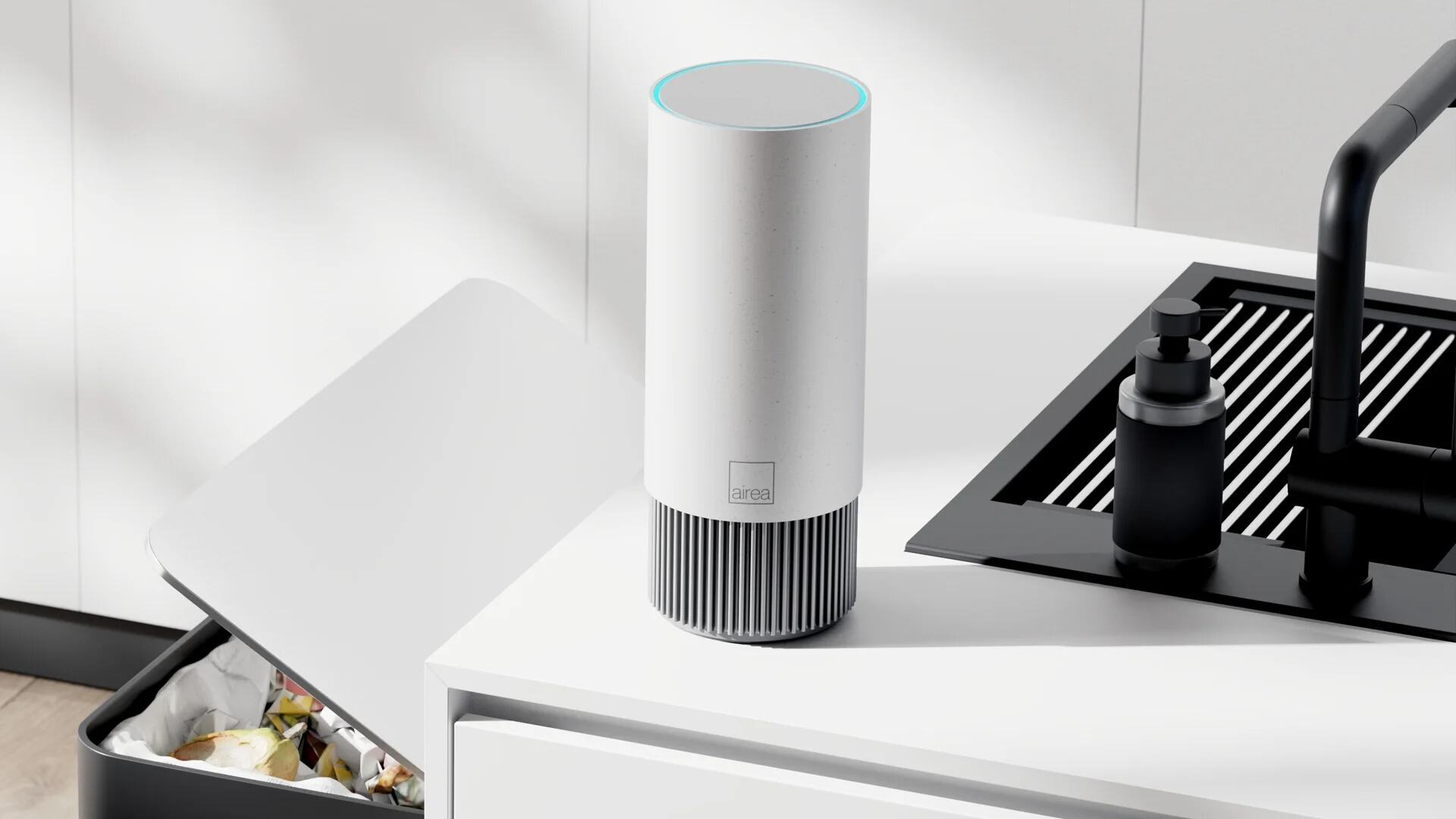
The cylinder reminds me of an internet router. And when I press the button on the back, a gentle whir of a fan begins, while a soft blue glow emits from the top. But it’s not sending out Wi-Fi waves. The Airea is launching microscopic drops into the air that should bind to and eliminate viruses, volatile organic compounds (VOCs), and molds for up to 800 square feet. All without swapping a high-efficiency particulate air (HEPA) filter. In fact, Airea can run for two years straight, and all you need to do is change a light bulb.
Airea, which is on the market now for $350, was created and funded in-house by the design firm MNML. Developed by Scott Wilson—the former global creative director at Nike, who has built everything from smart watches to Theraguns and CBD inhalers—he was first inspired through his work with Marriott.
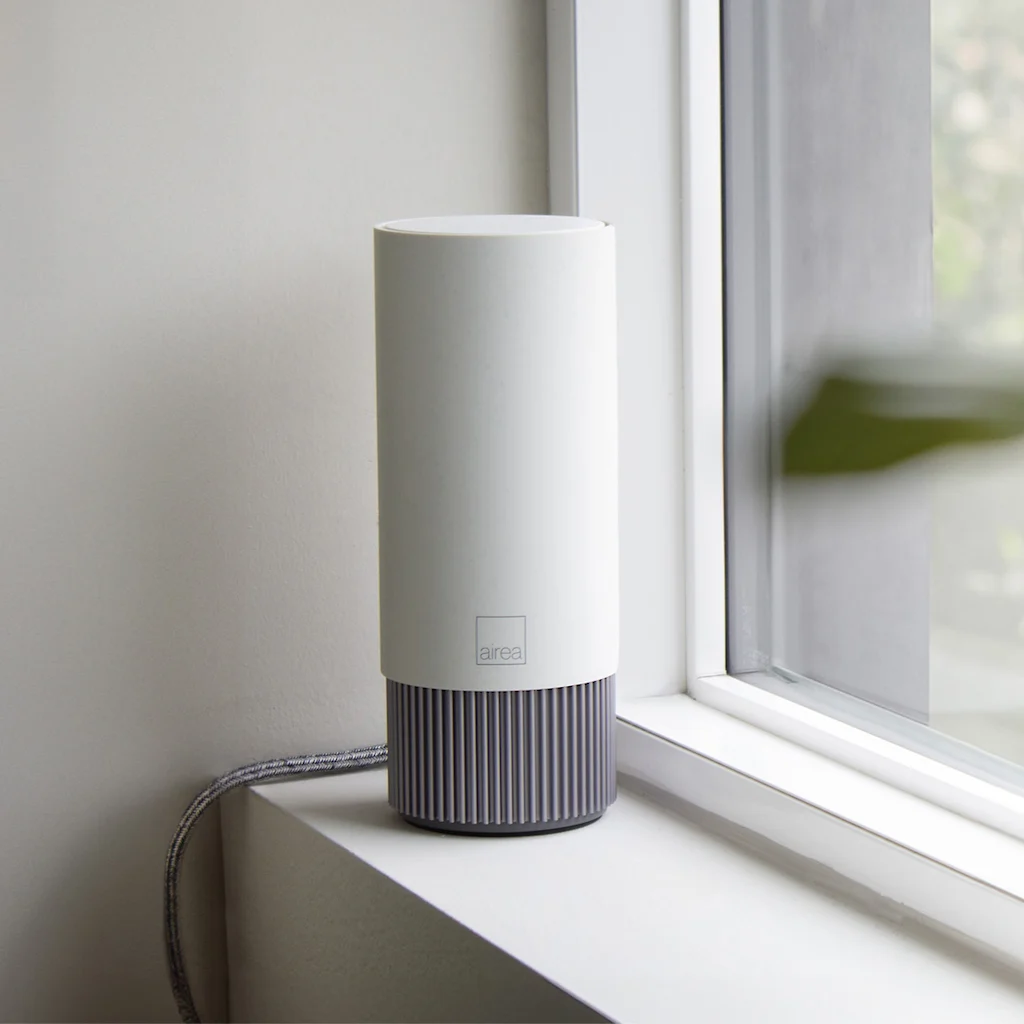
The hotel chain was interested in pursuing a pillow chocolate that might help someone sleep, but along the way, someone on the team showed Wilson a giant machine that could sterilize rooms—eliminating cigar smoke and SARS alike. It pumped H202 droplets (also known as hydrogen peroxide) into the air, which trapped particles and also sterilized surfaces.
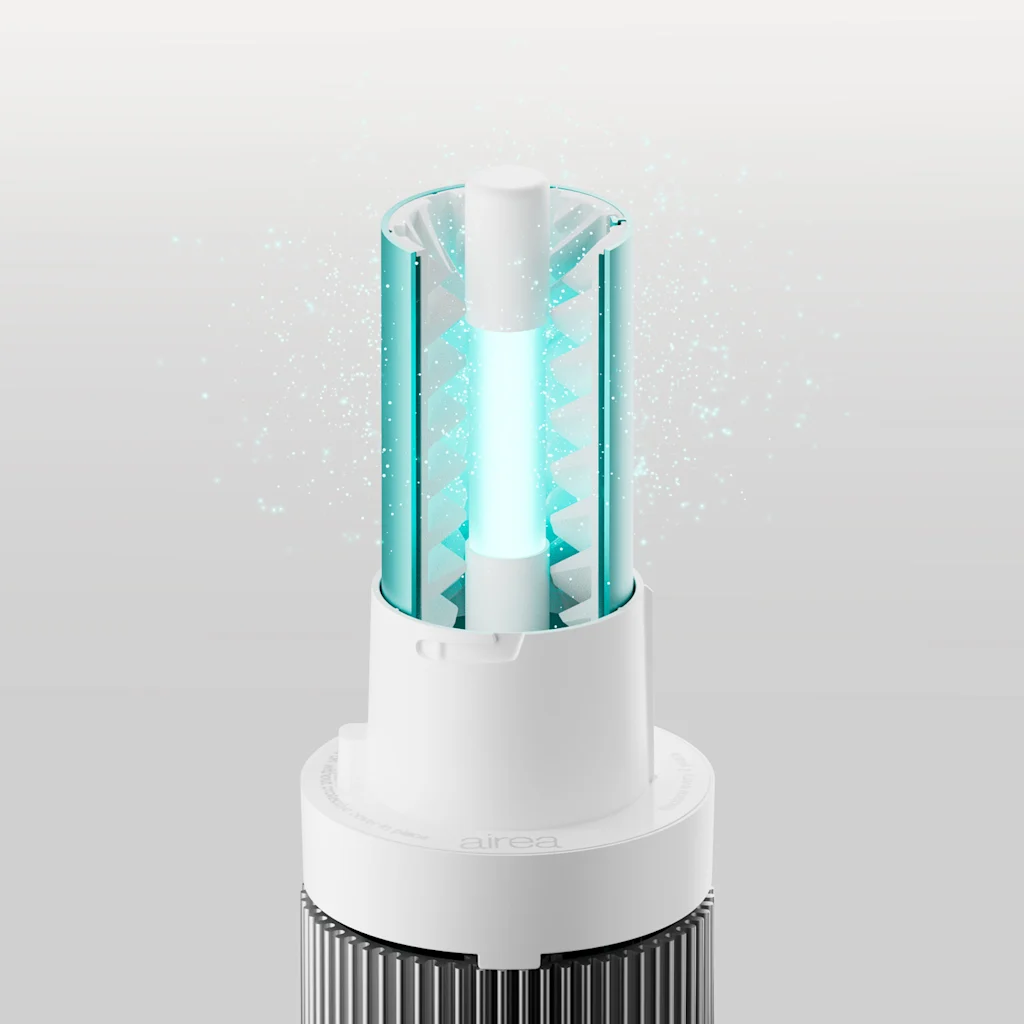
“I was like, why is this not in the consumer segment?” recalls Wilson.
A month later, COVID-19 would reshape the world. And Wilson became obsessed with how H202 technology might be translated from expensive, large industrial machinery to a more practical domestic gadget.
Hydrogen peroxide is what many of us know as a strong bleaching agent, used in everything from sanitizers to teeth whitening strips. Pumping that into the air is an inherently unsettling idea. But as Wilson learned, our body naturally produces some H202 as part of our immune process, and given its ability to neutralize viruses, it’s been researched for use in the development in vaccines.
In significant amounts, H202 is unhealthy, but it’s still used today in places like food factories to sterilize machinery. Occupational Safety and Health Administration (OSHA) standards regulate that air should not have more than 1 part per million of H202. What Wilson developed over the following four years with Airea operates at levels 60 times lower than that, saturating the air with H202 levels at 15 parts per billion to 20 parts per billion. And while it’s not yet Food and Drug Administration (FDA) approved, independent lab testing has demonstrated that Airea should eliminate more than 99% of viruses in the air.
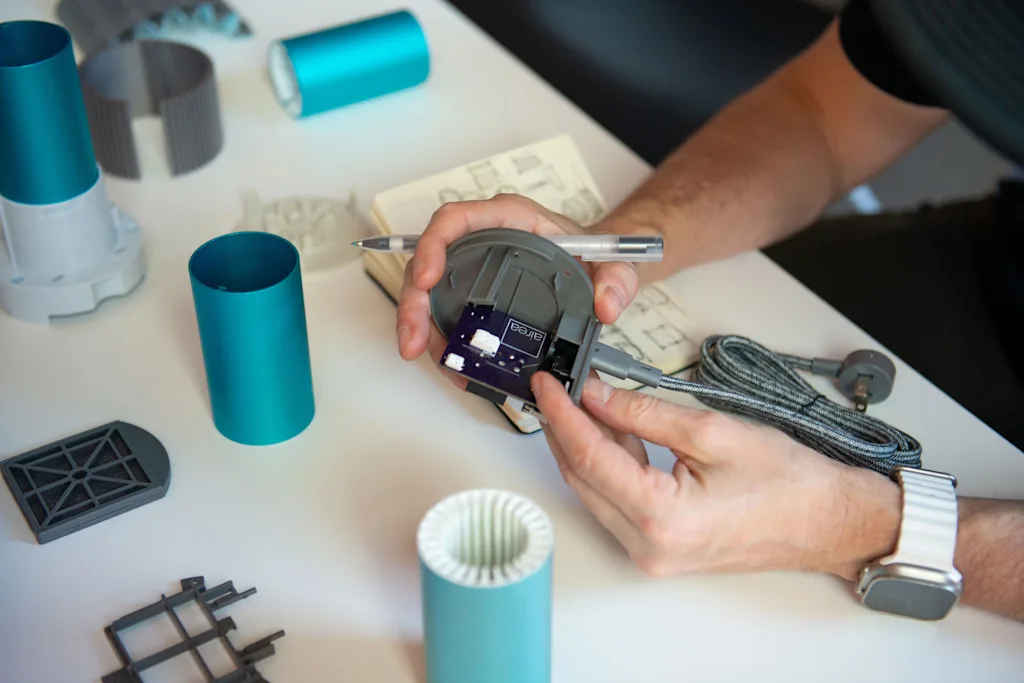
Building a quieter, no fuss air purifier
When Wilson’s team began working on Airea, he put a significant restraint on the design. He wanted the product to be so simple that it could be manufactured in the U.S. rather than China. (And he got close. Airea’s major components are molded in the U.S., with its final assembly in the Dominican Republic.)
He still can’t say exactly what drove the impulse, which now seems prophetic given global supply chain issues and tariffs. “Our job is to predict things. Part of it was, [the world] seemed unpredictable,” says Wilson. “And honestly, I didn’t want it to get knocked off.”
The ensuing architecture of Airea is quite simple. It’s essentially an extruded aluminum base, a computer fan, and a light bulb. The real ingenuity behind the design is that the aluminum is treated with a special coating so that when the light hits it, the surface generates H202 droplets. (Wilson has patents on the geometries of these aluminum fins, which maximize the surface area for light to hit and generate H202.)
“People might be able to reverse-engineer the coating, but there are only so many ways to create that much surface area in a small footprint,” says Wilson.
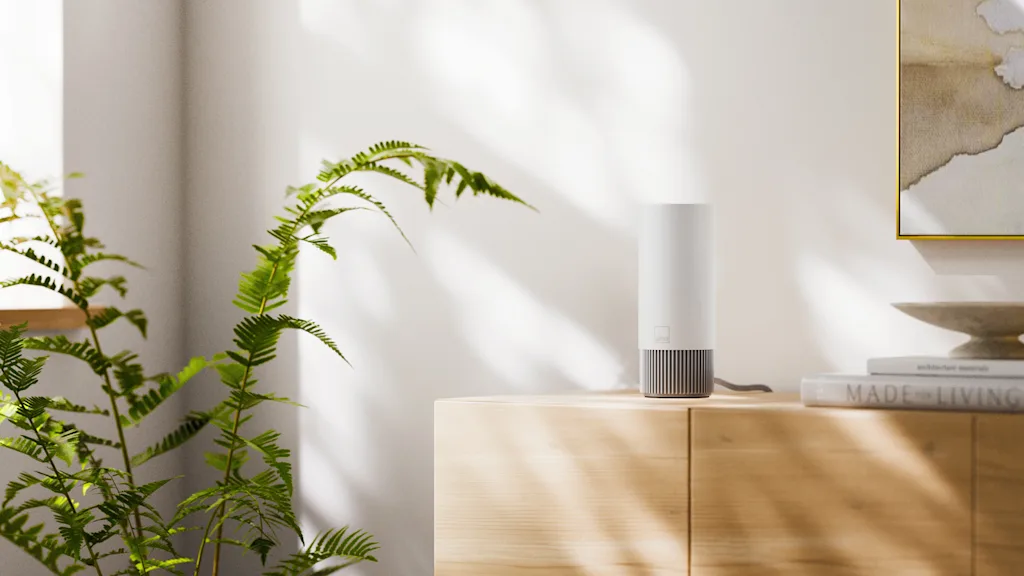
As for the design itself—with its router-like aesthetic—it’s not exactly an object of extreme beauty, but it’s also relatively innocuous. With a footprint somewhere between a tallboy and a small table lamp, it can be stuck just about anywhere to make a room’s air that much safer to breathe, and its surfaces that much more sterile to touch.
For now, just 5,000 units have been produced in Airea’s first run, as Wilson plans FDA testing and talks to partners who might expand their reach into various industries like healthcare.
In my own experience living with Airea, I did find the understated operation strange. At first, my mind oscillated between, “Is this even working?” and, “What am I breathing?” It’s substantially quieter than my HEPA unit that sits nearby, and you don’t really feel any breeze kicking out unless you hold your hand close. Airea’s protection is almost completely imperceptible, and I found myself craving some sort of extra proof of function before allowing myself to appreciate its minimal operation.
In this quasi-post-COVID-19 world, it’s easy to forget the amount of comfort air filters provided just a few years ago—and that clean air is something we should still be prioritizing in buildings today. When my wife walked into the kitchen one recent morning with a cough, it was an excellent reminder: I subtly turned the Airea back on and breathed a bit easier.















